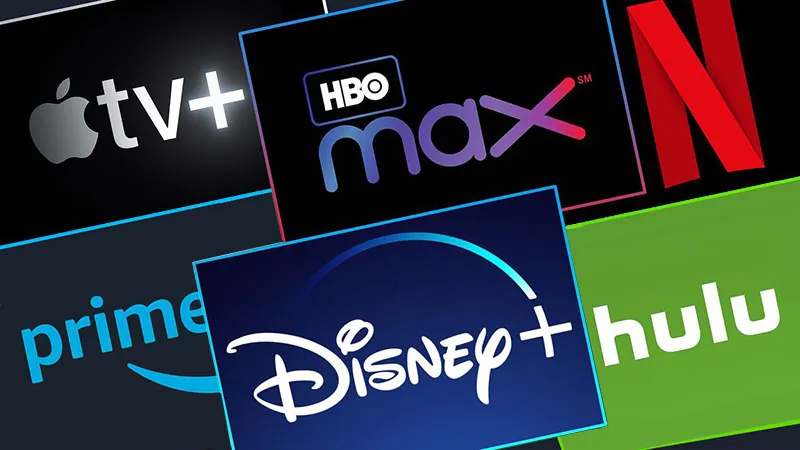Imagine this – watching Hulu in India, comfortably tucked in your favorite corner of the house. As we stand on the precipice of a new era, this could soon become reality.
This transformation is not just the future, but a global phenomenon that is rapidly reshaping the world of entertainment, and India is not exempt.
The game has changed, and it’s no longer merely about the volume of content, pricing strategies, or service availability. The true battlefield lies in the realm of innovation.
Behind the scenes, the titans of entertainment are waging a quiet war, each striving to seize the reins of the most pioneering technologies and patents.
The winner won’t be the one with the loudest announcements or grandest plans, but the one who can revolutionize how we consume, purchase, and experience entertainment.
The streaming revolution is already here and now, reshaping the media ecosystem faster than any innovation of the recent past. With the pandemic further accelerating digital consumption, global platforms are racing to meet the soaring demand for content.
From Netflix’s staggering 36,000 hours of content in the US to Amazon’s new-found wealth of MGM classics, and with Disney+ and HBO Max actively boosting their libraries, the story of watching Hulu in India presents a thrilling narrative.
So, let’s set sail and chart the course of India’s streaming revolution.
This Article Include
The Dramatic Transformation of India’s Entertainment Landscape
A shift has happened in our entertainment lexicon – movie nights have morphed into Netflix binges and IPL matches have moved from stadiums to digital screens.
The pandemic might have catalyzed this change, but the driving forces run deeper. It’s the unmatched convenience of streaming that has captured our collective imagination.
The tug-of-war for the TV remote is now history as each family member can enjoy their favorite shows on personal devices, even while commuting.
The abundance of content options, spanning a spectrum of languages and genres, and the freedom to watch on demand have irreversibly tipped the scales in favor of OTT platforms.
Boston Consulting Group foresees the Indian OTT market rocketing to a staggering $5 billion by 2023, a testament to the nation’s massive cord-cutting trend. The growth is palpable: from just two OTT providers in 2012 to a booming 40 players today.
With India’s OTT user base surging by a staggering 300% since 2019 to hit 680 million in 2021, it’s clear that the future of watching Hulu in India and other streaming platforms looks exceedingly bright, reaching far beyond urban landscapes into rural areas and tier 2 & 3 cities.
In the pulsating realm of OTT, the West has led the charge, buoyed by tech advances, a burgeoning mobile culture, and the quest for personalized experiences. Giants like Amazon, Facebook, and Apple have stepped into the arena, ushering in a new era of globally-shared content.
This worldwide entertainment exchange has spotlighted India, with shows like ‘Sacred Games’ and ‘Delhi Crime’ capturing international attention.
Hence, the prospect of watching Hulu in India emerges as an exciting possibility.
Industry leaders, such as Disney, have seized this opportunity, merging with local platforms like Hotstar to reach Indian audiences.
However, monetizing content in India poses unique challenges, with viewers favoring advertising-based models over subscription ones. Here, YouTube’s free-content approach, along with Disney+ Hotstar’s freemium model, thrives.
Interestingly, a KPMG study suggests that Indian viewers primarily flock to OTT for movies, music, and sports, more than original content. This shift underlines the fact that the OTT success in India hinges on understanding and meeting these distinct consumption preferences, shaping the future of digital entertainment in the country.
Igniting the OTT Spark in India: Content, Localization, and Regulations
India, with its teeming population of over 1.23 billion, presents fertile grounds for the expansion of OTT platforms. Here, the recipe for success intertwines several key factors.
The investment in original content is skyrocketing. In 2021, spending on India’s indigenous content reached over INR19.2 billion, an uptick influenced by the lockdown-induced audience surge in 2020.
This investment is poised to inflate further in the coming years, even tripling for platforms like Netflix, as consumers demonstrate a growing willingness to pay for exclusive content.
Significantly, regional content is the new goldmine in the battle for viewers. Post-pandemic trends show a surge in demand from tier-2 and tier-3 cities, shifting the OTT focus towards localization.
Amazon’s acquisition of MGM, for instance, opens a trove of diverse content, fostering more regional and hyperlocal streaming. By 2025, regional language consumption on OTT platforms is expected to cross 50%, surpassing even Hindi.
Meanwhile, the Ministry of Information and Broadcasting (MIB) has been propelling some form of regulation for OTT platforms to ensure streamlined growth.
The MIB’s recently notified rules necessitate a three-tier grievance redressal mechanism, designed to improve content quality and provide an ethical guide for this booming industry in India.
The exciting prospect of watching Hulu in India will further enhance the multifaceted OTT landscape in the country.


